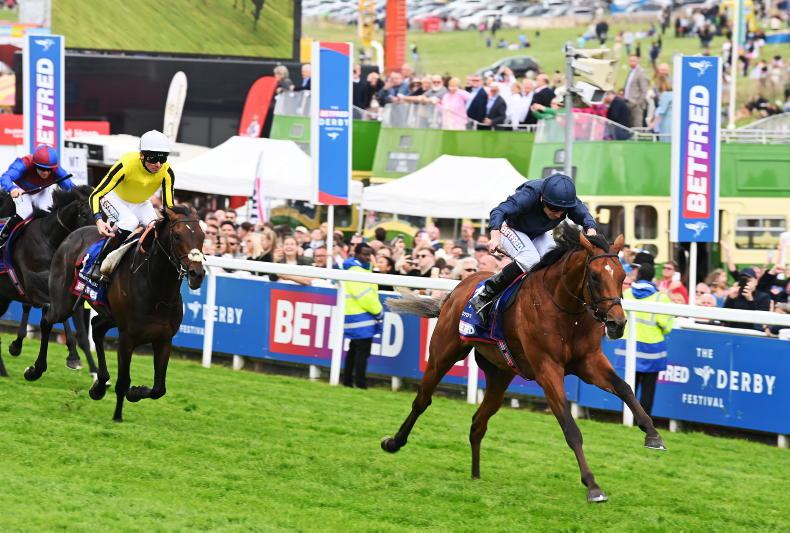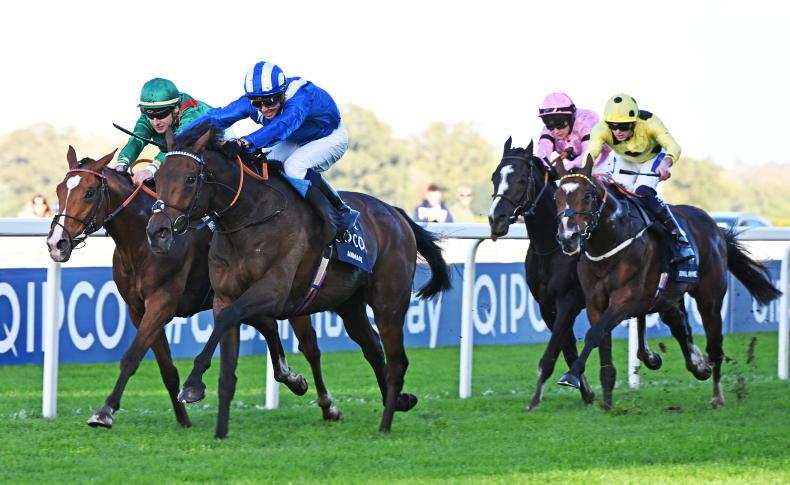Prix d’Ispahan (Group 1)
THE Whitsun weekend saw the renaissance of Gallic bloodstock come to a shuddering halt.
Unlike in many recent seasons, it has all been going so well for the home team of late.
French trainers have won their first two classics, Iresine and Jannah Rose, have seen off foreign challengers in the other two early spring Group 1 races, and the two best French three-year-olds of 2022 were waiting in the wings, ready to add to their own tallies of top level triumphs.
Last weekend’s biggest disappointment came not at home but at the Curragh, with Vadeni’s bafflingly poor performance in the Tattersalls Gold Cup meaning that huge question marks hang over the country’s brightest star, with some questioning if he well even make it back for the Prix de l’Arc de Triomphe in the autumn, let alone improve upon last year’s second place.
Then news came through that Onesto, who had proved to be Vadeni’s superior on a previous visit to Ireland, had met with an unspecified small setback and would not be taking his place in the line-up for last Monday’s Group 1 Prix d’Ispahan at ParisLongchamp.
Invaders
His absence left a field of six, three home defenders against three overseas invaders, and though it was the visitors who came out on top, filling the top two positions, the overriding emotion after the race was one of confusion. Could this be genuine Group 1 form if the first five finished within less than a length of each other?
In the short term, such a doubt will matter little to the winning trainer, Lambourn-based Owen Burrows.
He had gone on record saying that his chief goal this season with Anmaat, a gelded member of the first crop of the Derrinstown Stud stallion Awtaad, was to win a Group 1 with him and that target was not just achieved here, but done so over nine furlongs and 55 yards, opening up various avenues of attack for the rest of his five-year-old season.
Anmaat and Jim Crowley were poorly placed at the rear of the field with two furlongs to run and still managed to win over a trip that may be on the short side and on ground that was definitely on the fast side for him, so he was a deserving winner.
Yet three of the four horses that were hot on his tail at the line might, on another day, have prevailed.
The David Simcock-trained short neck runner-up, Light Infantry, set a stop-start gallop and the way that he rallied back into second, having possibly been relegated back to fourth place momentarily inside the final furlong, suggested that jockey Jamie Spencer’s decision to stack his rivals up behind him at the halfway stage might have been a mistake.
Facteur Cheval, who took third, just a nose further adrift, might have won if he had not been forced to switch to find racing room approaching the furlong pole, and the fifth, Erevann, never had much elbow room tight up against the inside rail.
Only the Joseph O’Brien-trained Irish representative, Buckaroo, had no obvious excuse, as he moved up from second to lead a furlong and a half out before weakening into fourth, beaten by just half a length in total.
Vicomtesse Vigier
Later on the ParisLongchamp card, The Good Man, like Light Infantry before him, saw his enterprising change to front-running tactics come up just short in the mile, seven furlongs and 110 yards Group 2 Prix Vicomtesse Vigier.
Having seen off the challenge of the favourite, Big Call, he succumbed to a short neck defeat to the Andre Fabre-trained Sober, who was completing a good couple of days for the Coolmore stallion, Camelot, who was also responsible for Sunday’s Tattersalls Gold Cup hero Luxembourg.
A FIRST attempt at pace-setting did pay dividends at Saint-Cloud last Sunday, however, as Joseph O’Brien’s Above The Curve never saw another rival en route to her two-length verdict in the Group 2 Prix Corrida over a mile, two furlongs and 110 yards.
Riding the imposing daughter of American Pharaoh for the first time, Maxime Guyon was told by her trainer not to be afraid to take advantage of her giant stride and the French champion judged things to a tee, keeping the speed down to beyond halfway and then gradually winding up the tempo around the final bend.
The Parisian air seems to agree with her – she had landed the Group 1 Prix Saint-Alary at ParisLongchamp a year earlier and finished a fine third in the Prix de l’Opera at the same venue on her only other visit.
The disappointment of the race was Nashwa, who was beaten by over four lengths into fourth, albeit her pilot, Hollie Doyle, was not hard on the dual Group 1 scorer in the closing stages.
Reappearance
Nashwa’s supporters should not despair, however, given that this was her reappearance and how much some horses have improved for their comeback runs following the chilly spring that we have experienced.
Take Above The Curve and Luxembourg, for example. They finished only fifth and seventh, out of seven, on their seasonal bows in the Mooresbridge Stakes on May 1st, yet didn’t do so badly when next seen four weeks later.




 This is a subscriber-only article
This is a subscriber-only article
 It looks like you're browsing in private mode
It looks like you're browsing in private mode











SHARING OPTIONS: